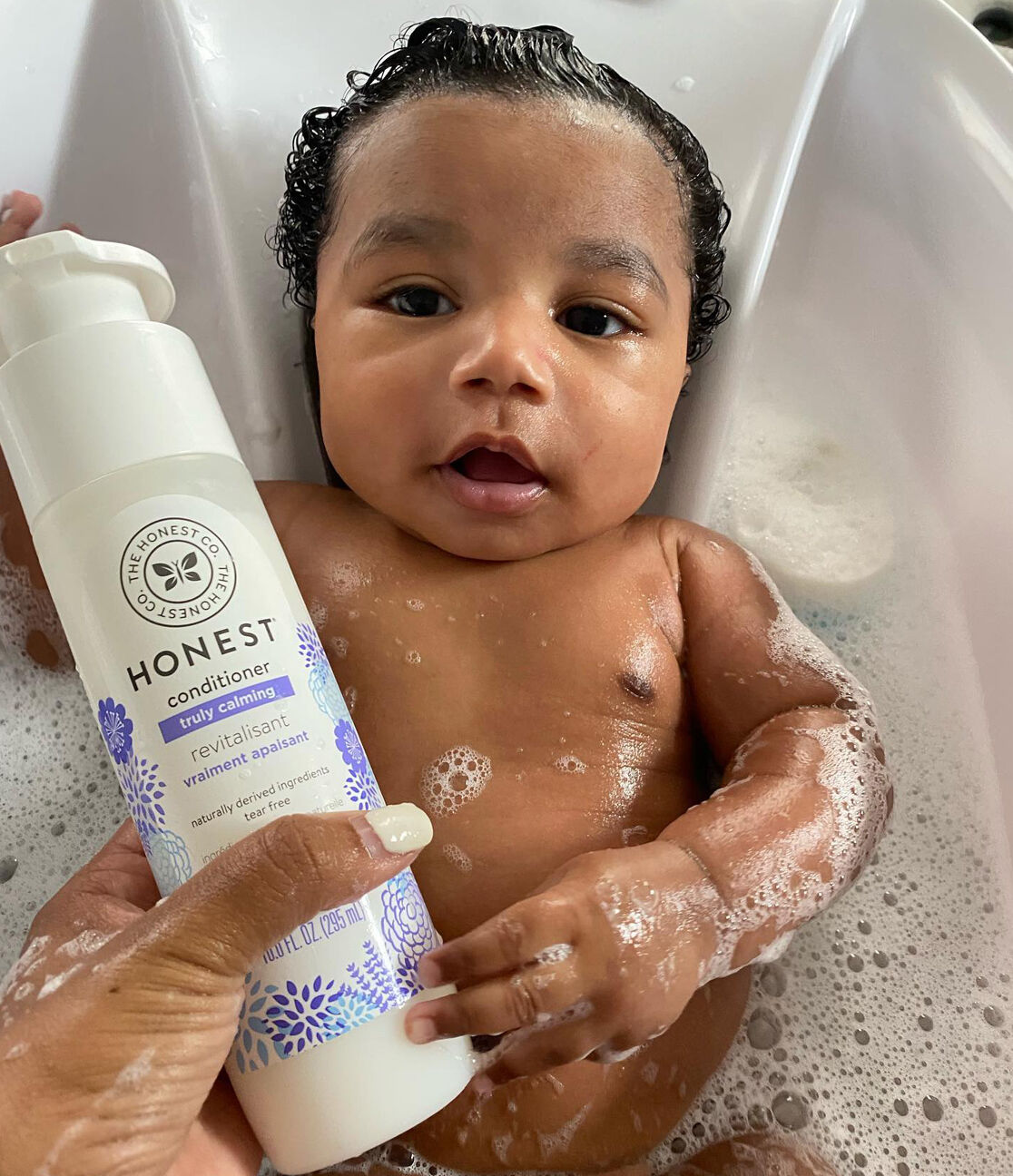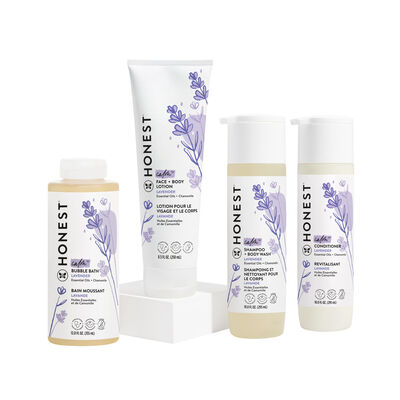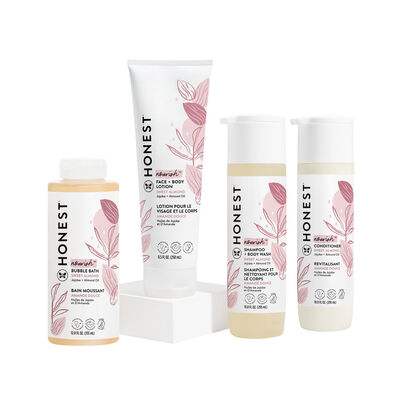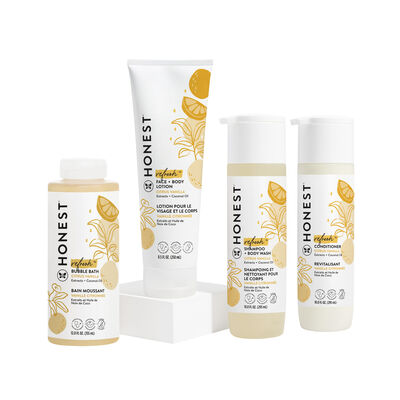Image by @xzayvier_l
Bathing your baby can be a wonderful experience, thanks to the bubbles, the bonding, and the giggles, wiggles, and grins. Your baby’s first bath is definitely a moment for the scrapbook. And those later bathtimes, complete with a pile of suds and bath toys? Absolutely the cutest.
But a wet and soapy baby can be quite the handful. Until you get the hang of it, bathing a baby can feel a bit like an exhausting juggling routine.
So if you’re wondering where, why, and how often to bathe baby, read on for an honest guide to all things splish-splashy.
How Often Does Your Baby Need a Bath?
How often should you bathe a baby? How often to give baby a bath depends on a number of factors:
- How old is your baby?
- Do they really need a daily bath?
- Is there a reason other than cleanliness to bathe them?
- Is their delicate skin dry?
Depending on their age and activity levels, your baby’s bathing habits will need to change as they grow and develop new skills.
At the Hospital
The World Health Organization (WHO) discourages bathing a newborn within the first 24-hours after birth. Keeping a newborn warm and skin-to-skin with mama for early bonding and feeding should take precedence over bathtime in most birthing plans.
For an uncomplicated birth, many babies are discharged from the hospital prior to their first warm bath. However, your medical team will be able to give you pointers on bathing your newborn baby, so don’t hesitate to ask if you’re feeling unsure.
Birth to Around Two Weeks
How often you should bathe a newborn baby depends on several factors. For the first two weeks after birth, your baby will likely still have an umbilical stump in the middle of their belly.
Caring for this strange raisin-like protrusion means you won’t be giving your baby a full tub bath yet. Although the umbilical cord is no longer needed and has been clamped and snipped, it’s still healing, so you’ll only be giving baby a sponge bath during this time.
Important care tips for the umbilical stump are:
- Keep the stump dry
- Expose the stump to air to help it dry and heal
- Let the stump fall off on its own
Luckily, newborn babies don’t need a daily bath. Because you should be thoroughly cleaning their diaper area with each change and spot-cleaning them after feeding and burping, your new baby isn’t getting very dirty. Giving this age baby a sponge bath every two to three days is plenty.
After the Umbilical Cord Falls Off
Once the baby’s umbilical stump has fallen off, you’re ready for their first tub bath. However, your baby is still not getting very dirty, so limit the tub bathing to two or three times per week to help keep your baby’s skin soft and delicate. Although bathing may serve as one of several effective baby rash remedies, just remember to be mindful; if you notice signs of dryness, bathe baby less frequently and reevaluate your care products.
Signs of dryness include:
- Dry, red patches
- Peeling skin (different from the normal sloughing of vernix)
- Scaly patches
How To Bathe a Baby
You’ve got a lot to handle during baby bathtime. From the shampoo and lotion to the bath water and air temperatures to the towel and washcloth, there are a lot of moving parts—and that’s before even considering your slippery, wiggly baby!
Making a plan and thinking through the process ahead of time will help you stay calm and enjoy the process.
Giving Baby a Sponge Bath
For the first two to three weeks after birth, you will be giving your baby a sponge bath. Here are some tips to make it soothing and calm for both of you:
- Gather supplies – You’ll need:
- Thick towel or cushion as a base
- Soft washcloth
- Basin
- Baby Soap
- Shampoo
- Lotion
- Hooded towel
- Fresh baby diapers and clothing
Consider using a bath set such as our Bathtime with Baby that features calming aromas like lavender so that bathtime is a natural lead-in to naptime.
- Check temperatures – Because newborns have a hard time regulating their body temperature, both the bath water and the ambient temperature should be warm enough to keep your baby comfortable. Make sure there are no drafts and that the room is between 70-75℉. The water temperature should feel warm but not hot to your touch. Remember to work quickly enough that the lukewarm water doesn’t cool mid-bath.
- Clean Your Baby – With your baby wrapped in a hooded towel and resting on a flat surface covered by another thick towel or cushion, carefully uncover only as much of your baby as you can clean quickly. Dip your washcloth in the basin of lukewarm water and gently bathe, avoiding the umbilical stump. Use a dab of baby shampoo on your baby's hair if needed. Rinse with fresh warm water. Never scrub and never, ever take your hands off your baby, even for a second.
- Dry and Dress - After bathing, pat your baby dry completely. Check for irritated skin and use a soothing, baby-safe lotion as needed. If you are wondering how to prevent diaper rash, using a gentle baby-safe soap followed by a nourishing moisturizer will be key to your baby’s comfort. Re-dress your baby in a fresh diaper and warm clothing. Now breathe a sigh of relief. Congratulations! You’ve done it!
Giving Baby a Tub Bath
The tips for a successful tub bath are not very different from a sponge bath. You still need to gather your supplies early and be mindful of air and water temperatures. Then:
- Prepare the tub – A bathtub specifically designed for bathing a baby will be helpful and take the strain off your back. Many of these have a bottom plug for easy draining, a built-in thermometer, and a non-slip mat to keep your hands and baby steady. Use the same temperature guidelines as you did for a sponge bath. If the water feels hot to you, it is certainly too hot for the baby.
- Bathtime – Unlike a sponge bath, your baby's legs, arms, and torso can be partially submerged in the bubble bath. You still need to work quickly, staying mindful of your baby's temperature. Never, ever leave your baby unattended. Use your washcloth to gently clean and massage your baby, and only use baby shampoo when needed. Always rinse all residue off your baby with clean water. Finally, pat your little one dry and use lotion as needed.
- Start a Routine – By the time your baby is old enough for their first tub bath, you’re beginning to find other routines in your new life as a family. Bathing routines can be some of your most enjoyable together. Make this time special for you and your baby by buying high-quality bath products, relaxing, and speaking softly.
For a Bathtime Everyone Loves, Trust Honest®
At Honest®, we believe in providing you with the best quality products for bathtime with your baby. Whether you’re bathing a newborn and need soothing baby shampoo or are giving a bubble bath to an older baby, we have everything you need—and nothing you don’t.
All our baby bathtime products are non-toxic, safe, and effective while free of iffy ingredients and yucky additives.
Try our Baby Arrival Gift Set for a little bit of all our baby bathtime goodness.
Sources:
WHO Recommendations on Newborn Health. (2017, May). World Health Organization.
Umbilical Cord Care. (2020, February 7). Mayo Clinic Healthy Lifestyle. https://www.mayoclinic.org/healthy-lifestyle/infant-and-toddler-health/in-depth/umbilical-cord/art-20048250
We aim to provide you with the most honest and credible information possible. This article was reviewed for accuracy by The Honest Team and its internal technical experts.
blog_review_statement













